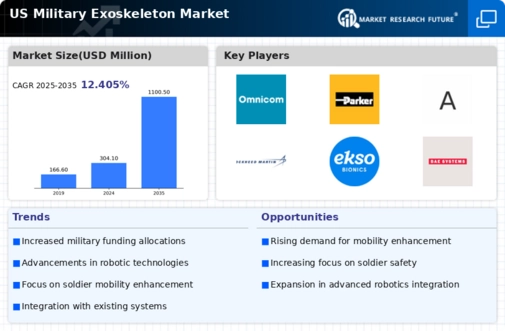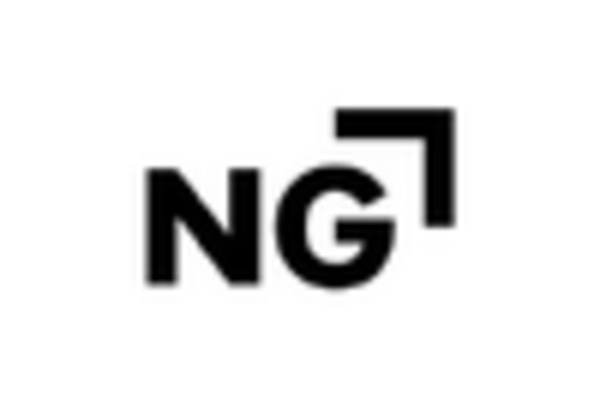Increased Defense Budgets
The military exoskeleton market is experiencing growth due to increased defense budgets in the US. The government has allocated substantial funds to enhance military capabilities, with a focus on advanced technologies. In 2025, the defense budget is projected to exceed $800 billion, with a significant portion earmarked for research and development of innovative systems, including exoskeletons. This financial commitment indicates a strong intent to improve soldier performance and safety, thereby driving demand for military exoskeletons. As the military seeks to maintain a technological edge, investments in exoskeleton technology are likely to rise, fostering a competitive landscape in the military exoskeleton market.
Growing Interest in Autonomous Systems
The military exoskeleton market is witnessing a growing interest in autonomous systems that can work alongside human operators. As military strategies evolve, there is a trend towards incorporating autonomous technologies that can assist soldiers in various tasks. Exoskeletons equipped with autonomous features can potentially enhance operational capabilities, allowing for more efficient execution of missions. The integration of artificial intelligence and machine learning into exoskeleton design may lead to systems that can adapt to the user's movements and environment. This trend towards autonomy is likely to shape the future of the military exoskeleton market, as it aligns with broader military objectives of increasing efficiency and effectiveness.
Focus on Rehabilitation and Injury Prevention
The military exoskeleton market is also influenced by a growing focus on rehabilitation and injury prevention for service members. With the increasing incidence of musculoskeletal injuries in the military, there is a need for solutions that can aid in recovery and reduce the risk of injuries during training and operations. Exoskeletons can provide support during rehabilitation, allowing injured personnel to regain strength and mobility more effectively. The potential to decrease injury rates by up to 30% through the use of exoskeletons presents a compelling case for their adoption. This focus on health and safety is likely to drive demand within the military exoskeleton market.
Rising Demand for Enhanced Soldier Performance
The military exoskeleton market is propelled by the rising demand for enhanced soldier performance. As military operations become increasingly complex, there is a pressing need for technologies that can augment physical capabilities. Exoskeletons are designed to reduce fatigue, increase load-bearing capacity, and improve mobility, which are critical factors in modern warfare. Reports suggest that exoskeletons can enhance a soldier's strength by up to 200%, making them invaluable in combat scenarios. This demand for performance enhancement is likely to drive innovation and investment in the military exoskeleton market, as military leaders prioritize the well-being and effectiveness of their personnel.
Technological Integration with Existing Systems
The military exoskeleton market is benefiting from the technological integration of exoskeletons with existing military systems. As armed forces seek to create a more cohesive operational environment, the ability to integrate exoskeletons with communication and weapon systems becomes crucial. This integration can enhance situational awareness and operational efficiency, allowing soldiers to perform tasks more effectively. The military exoskeleton market is likely to see increased collaboration between technology developers and military branches to ensure compatibility and functionality. Such advancements may lead to a more streamlined approach to military operations, further driving the adoption of exoskeleton technology.

















Leave a Comment